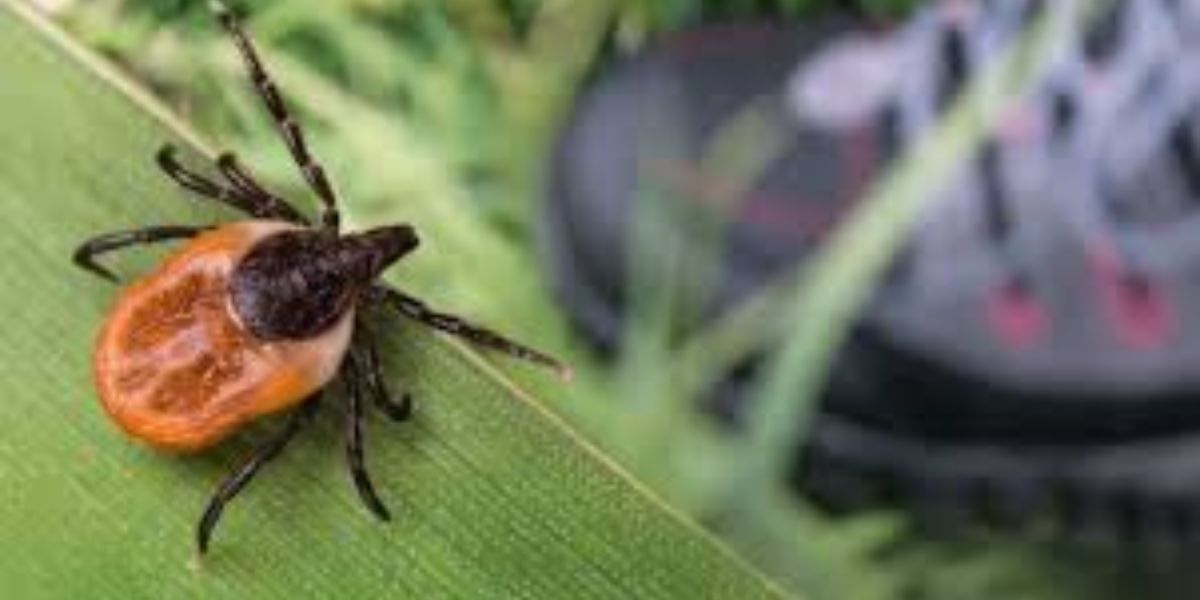It’s possible that the tiny black dot on your arm or leg is not a freckle or mole in south-central Indiana. Perhaps it’s a tick that can carry diseases and infect you. In the spring and summer, people in the Hoosier state who have been outside or who own pets may come into contact with more ticks than they think.
According to Lee Green, senior medical entomologist with the Indiana Department of Health, “June is still really high for nymph black-legged ticks.” In addition to other infections, black-legged ticks spread Lyme disease. According to Green, nymph ticks carry the greatest number of diseases that humans contract because of their small size and difficulty in finding them.
Which kind of ticks are disease-carrying in Indiana?
Six ticks in Indiana can carry and transmit diseases to humans. They are all capable of spreading many pathogens.
1. Tularemia and Rocky Mountain spotted fever are transmitted by American dog ticks.
2. Lyme disease, anaplasmosis, babesiosis, and the Powassan virus are all spread by black-legged ticks.
3. Rocky Mountain spotted fever is transmitted by the brown dog tick.
4. Rickettsia parkeri is carried by Gulf coast ticks; no Indiana cases have been reported.
5. Ehrlichiosis, tularemia, the Heartland virus, the Bourbon virus, and the southern tick-associated rash sickness are all spread by lone star ticks. Alpha-gal syndrome, a condition that causes allergies to red meat and other goods derived from mammals, is also spread by ticks. Without any prior warning, this syndrome might result in severe reactions.
6. Found in four counties in southern Indiana, the Asian longhorned tick is a novel invasive species. It carries the Heartland and Powassan viruses, as well as the virus that causes Rocky Mountain spotted fever, though no cases of it infecting humans have been reported as of yet.
Fever, headaches, and disturbances to the neurological and gastrointestinal systems are among the symptoms of disorders brought on by tick bites. The most frequent sickness transmitted by ticks that is recorded in Indiana and the US is Lyme disease. Along with fever, chills, and exhaustion, the majority of Lyme disease patients also experience a “bulls-eye” rash. Lyme illness can spread to the heart, neurological system, and joints if treatment is not received.

A hazard to cattle, the Asian longhorned tick is a recent discovery in Indiana.
Livestock is a major target for the Asian longhorned tick, which appears to favor them over humans. The female tick can lay up to 6,000 eggs at a time and reproduces without the male. Ticks can strangle livestock, including cattle, if they attach themselves to enough of them. According to Green, “it literally can suck cattle dry.” “It’s really pretty rough.”
SEE MORE –
Electric Car Tariff Dialogue Planned Between China and EU
The only Indiana counties where the Asian longhorned tick has been discovered thus far are Ohio, Debois, Spencer, and Switzerland. Given that it can be transmitted by a variety of species, including deer, birds, and farm animals including pigs, chickens, sheep, goats, and cows, Green stated that officials are keeping a tight eye out for the tick.
Which tick species now inhabit Monroe County?
At Flatwoods Park, Jackson Creek Park, Karst Farm Park, Riddle Point Park, Switchyard Park, and Griffy Lake Nature Preserve, environmental health specialist Kody Clark of the Monroe County Health Department started “collecting” ticks in May.
He has traveled roughly 4,860 meters, or 5,315 yards, with a white cloth pulled down the ground, gathering 178 ticks in the process. Clark added that he had gotten training from the Indiana Department of Health the previous year and that it took seven to ten hours at each location.
He had never used the drag cloth until this May. What he discovered:
Lonestar Tick Nymph measures 122 American Dog Tick Adult Female, 5 American Dog Tick Adult Male, 6 Blacklegged Tick Nymph, 1 Ixodes Dentatus Nymph (which seldom feeds on humans and is not significant to public health), 1
This fall, Clark wants to do it again. As long as the temperature is above freezing, he claimed that some ticks in Indiana continue to be active throughout the winter.
Before you walk outside is the best time to start taking precautions against ticks making their way onto your person and maybe biting you. These recommendations are found on the state Department of Health’s website:
Recognize the tick-prone locations, which can include your yard and neighborhood, as well as grassy, brushy, or wooded places.
SEE MORE –
Japan’s Record Spike in Deadly Infections: Probing the Strep Enigma
Apply a 0.5% permethrin treatment to your clothing and outdoor gear. People can get rid of ticks and lice by using the insecticide permethrin. The greatest defense is to apply permethrin to clothing that is hanging outside and allow the substance to dry. It is not advisable to apply permethrin topically.
Wear insect repellents that are EPA-registered and include either 2-undecanone, para-menthane-diol, oil of lemon eucalyptus, picaridin, or DEET. Always adhere to the directions on the package. NOTE: Avoid using para-methane-diol or oil of lemon eucalyptus on children under three years old, and avoid using insect repellent on infants younger than two months old.
Wearing long sleeves, long pants, caps, socks, and full-footed shoes will help you cover up as much exposed flesh as possible. Additionally helpful are tucking in your shirt and tucking your pantlegs inside socks.
When you’re outside, it’s better to stick to trails, stay clear of bushes and grass, and reapply bug repellent. You can also see ticks creeping up your legs or on the back of your shirt more easily if you dress in light colors.
The easiest approach to make sure you haven’t picked up any ticks once you’re inside is to take a shower, inspect yourself, and then throw all of your clothes in a hot dryer set on tumble for 20 minutes. Remember to inspect your outdoor gear and pets as well.
Tips for dealing with ticks
According to the state Department of Health website, if you do come across a tick, it is recommended that you remove it as closely to your skin as possible using tweezers or a tick removal tool. The goal is to swiftly extract the tick by applying uniform, constant pressure—don’t pull upward. Use soap and water or alcohol to clean the area.
After it’s been extracted, soak the tick in alcohol, put it in a container or sealed bag, and secure it with tape. You can dispose of it by flushing it down the toilet, but it might be wiser to save it so you can identify the kind of tick in case you react negatively.
See your doctor if, within a few weeks, you have a rash or fever, and don’t forget to mention the tick bite.




